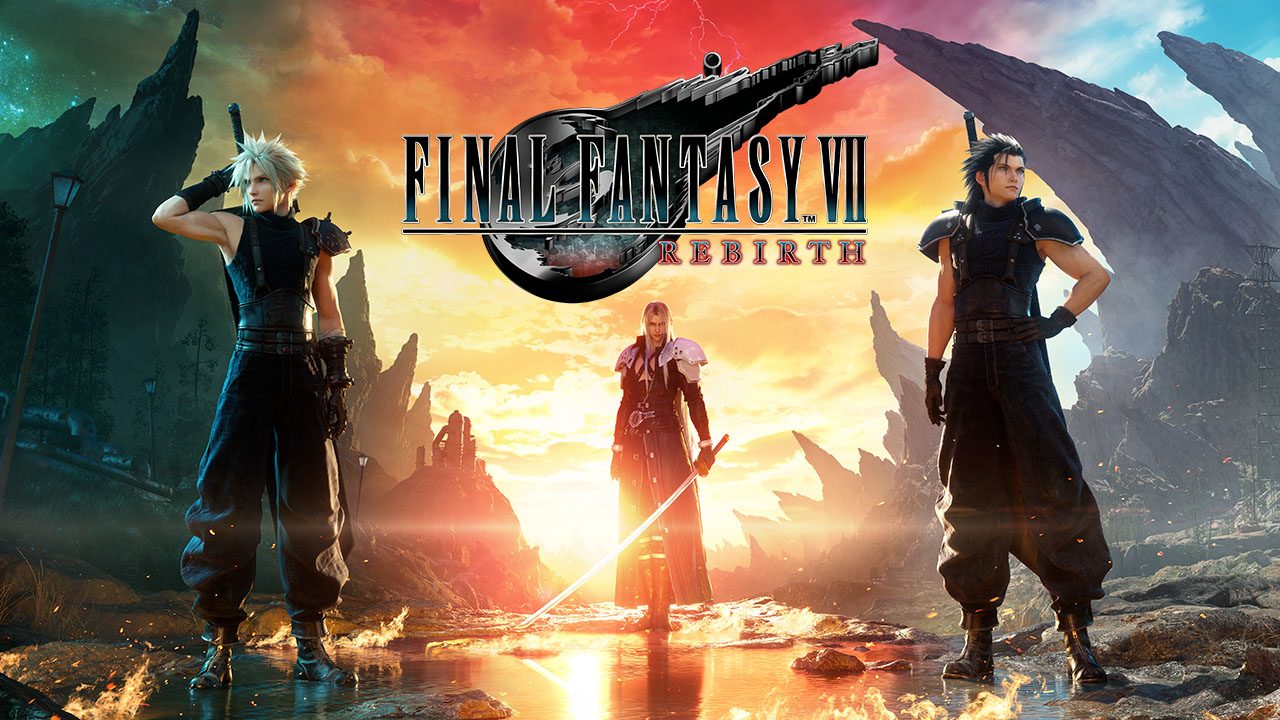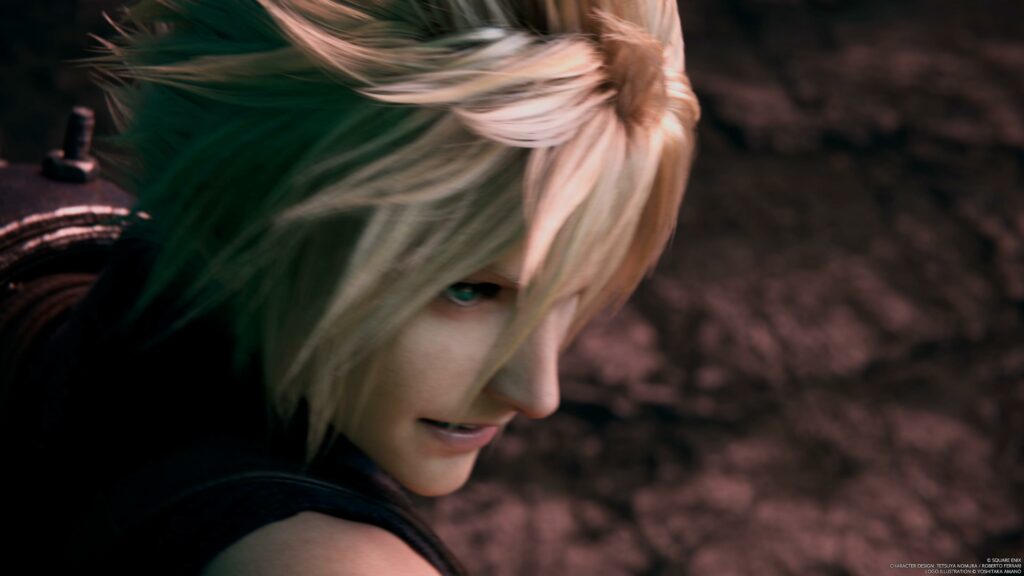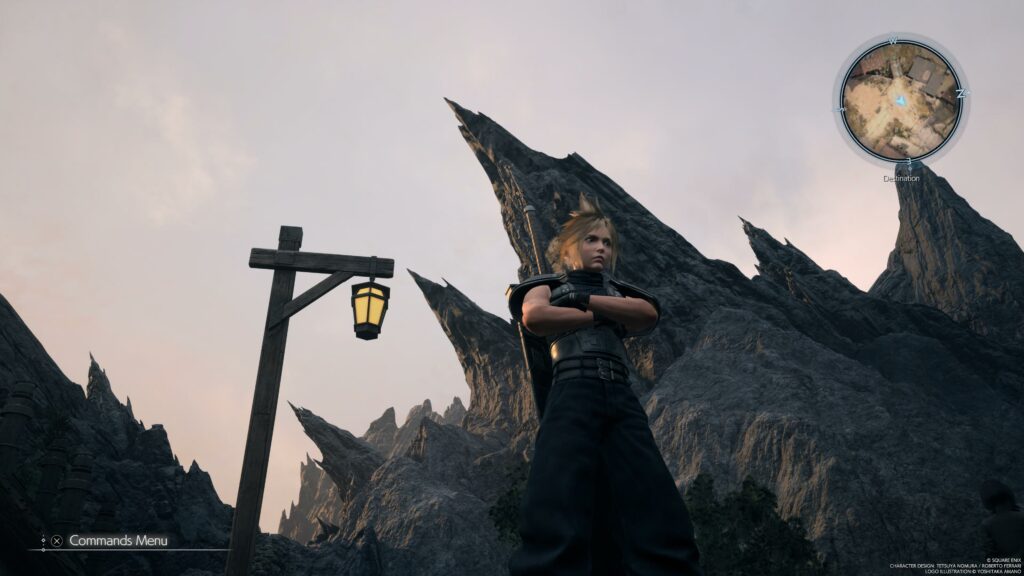You'll love it if:
- You’ve loved Final Fantasy VII Remake
- You’re a big fan of JRPGs
- You want to play an open-world game
- You enjoy losing hours playing minigames
Not for you if:
- You consider Final Fantasy VII Remake a blasphemy
- You’re not invested in the Final Fantasy series
- You don’t like JRPGs in general
- You prefer shorter games
Remaking one of the most beloved JRPGs of all time would always be challenging. So instead, Square Enix decided to build on its foundations and expand its story while respecting what came before. The Compilation of Final Fantasy VII was the company’s first attempt to breathe new life into the game with projects like Crisis Core: Final Fantasy VII. However, things quickly spiralled out of control due to creative differences between various directors, genres, and story elements.
Fast-forward to 2020, and Final Fantasy VII Remake came out intending to start from scratch – by acting as a sequel to the original Final Fantasy VII. Instead of “remaking” the game itself, Final Fantasy VII Remake is a “remaking” of its world, its universe, by continuing the story where the first game ended. This was a controversial choice by the director Tetsuya Nomura, famous, or infamous, for his work on the Kingdom Hearts series.
Continuing the story where Final Fantasy VII Remake ended, we now have Final Fantasy VII Rebirth, a PlayStation 5 exclusive built on the Unreal Engine 4. Does it do a good job of building on Nomura’s foundations? How does it stack up against other modern Square Enix games like Final Fantasy XVI?
TL;DR
Final Fantasy VII Rebirth is an ambitious step forward for Square Enix and a worthy sequel to Remake. It opens up its world to exploration, side quests, and minigames. It balances a dramatic story with goofy moments very well and it’s a dream come true for any Final Fantasy fan.
Story – Treading the (Un)Charted Waters
Final Fantasy VII Rebirth picks up where Final Fantasy VII Remake left off. Cloud and his friends are leaving Midgar in search of Sephiroth, Cloud’s former mentor and ex-member of SOLDIER, Shinra’s elite unit of genetically modified fighters. The ending of Final Fantasy VII Remake is no secret at this point, and if you’ve been on the internet for a while, you’ll know just how drastic the story changes from the original game are here.
Director Tetsuya Nomura took a step in a brand-new direction for the series, for better or worse. Fans are still divided on whether this was a good choice or not and this game will continue that trend. Without going into spoilers, those who loved Crisis Core: Final Fantasy VII and its main character will be very happy with Final Fantasy VII Rebirth.
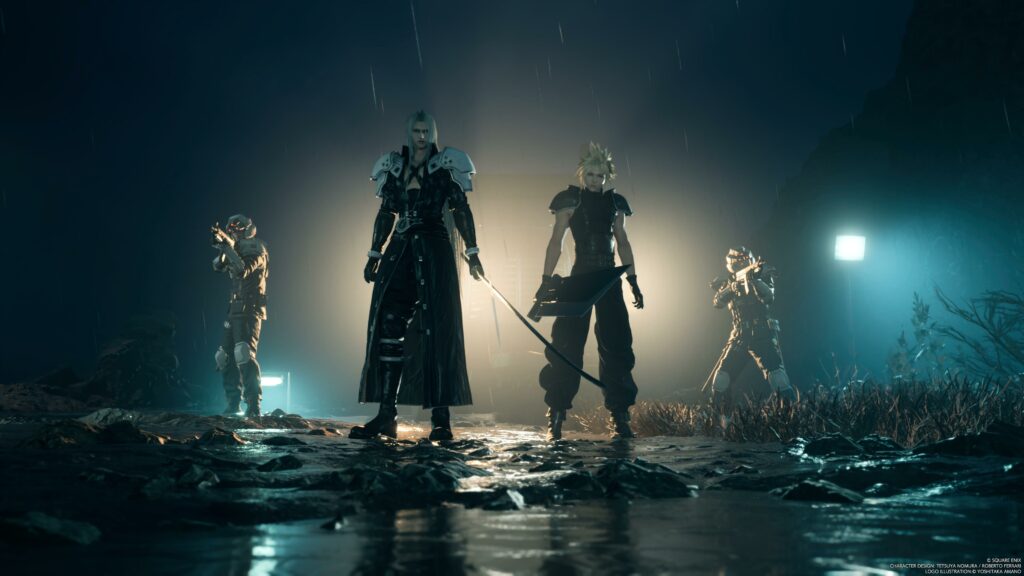
From Midgar to Nibelheim
After leaving Midgar, the party finds itself in Kalm, a small city on the way toward Sephiroth. While Cloud doesn’t know where his former mentor is, mysterious hooded figures from the previous game make a return in Final Fantasy VII Rebirth. You’ll spend most of the early game following them across the world, hoping they’ll lead you to Sephiroth.
On the way, however, you’ll engage in a lot of quests which some fans might consider unnecessary. Padding was a big problem for many in Final Fantasy VII Remake, especially if they’ve played the original game recently. Final Fantasy VII Rebirth continues this trend but makes most of its extra content optional. This time, you’re free to play card games, catch Chocobos, explore the world, and grind if you want to – or not, and simply follow the story.

Balancing Between Different Tones
Final Fantasy VII Rebirth does something many Final Fantasy games failed to do properly in recent years. While Final Fantasy VII Remake was a mostly serious and dramatic game (with a few silly moments), this one is a case of a 50/50 split. If we had to make a comparison, it would be something close to what Like a Dragon games have been doing for years.
One moment, you’ll be discussing war and politics with your party members and in the other, infiltrating a bar exclusive to bald guys (you read that correctly). Simply playing Final Fantasy VII Rebirth is so refreshing after dark and brooding stories of Final Fantasy XIII, XVI, and Type-0 just to name a few.
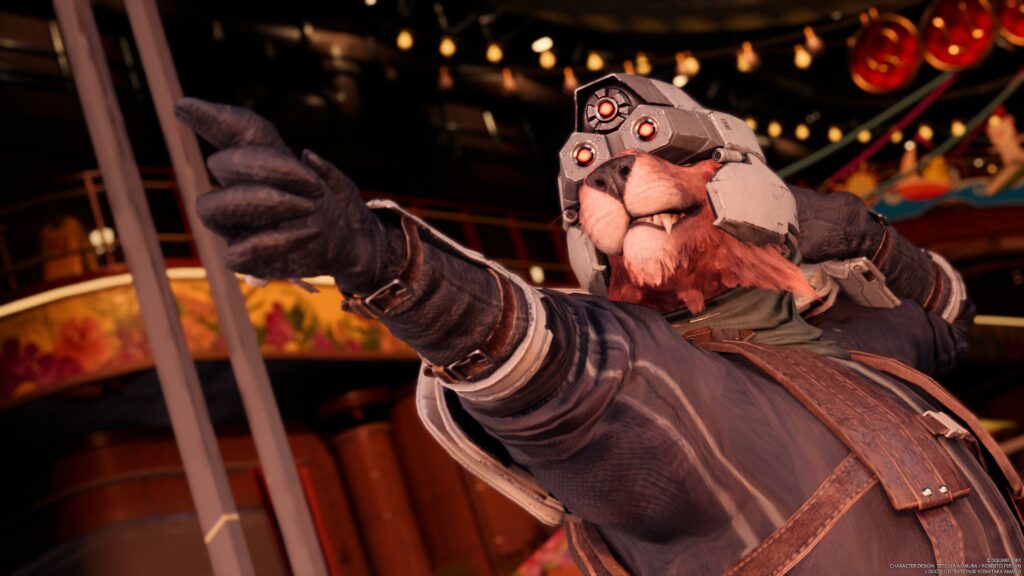
Gameplay – A Step Up from Part One
The open-world nature of Final Fantasy VII Rebirth is a big step in the right direction compared to the previous game. Midgar was a city, but it was a linear journey of going from point A to point B without any freedom apart from a few small areas to explore. This game throws the last game’s linearity out the window and lets you do whatever you want – apart from a few mandatory linear dungeons here and there.
The game is much more dynamic in letting you play it the way you want to. Almost from the start, you can choose your party members freely and build the type of group you want. While two other members can accompany Cloud in Final Fantasy VII Rebirth, others will still follow your party anywhere you go, engage in dialogue, and even help in battle to a certain degree.
The combat in Final Fantasy VII Rebirth is similar to the one found in Final Fantasy VII Remake, with a few improvements. You’ll engage enemies in action-based combat and cast spells or use different skills once your action bar has filled up. The game is an RPG at its core but it gives you an illusion of an action game.
While exploring the world, you’ll also notice that characters can now climb or jump over obstacles more naturally than before, not only in pre-determined spots. This makes exploration more fluid as you’ll rarely get stuck behind a small rock that your character can obviously climb over. Everything that Final Fantasy VII Remake did before, Final Fantasy VII Rebirth does a little bit better – what more could you ask for in a direct sequel?
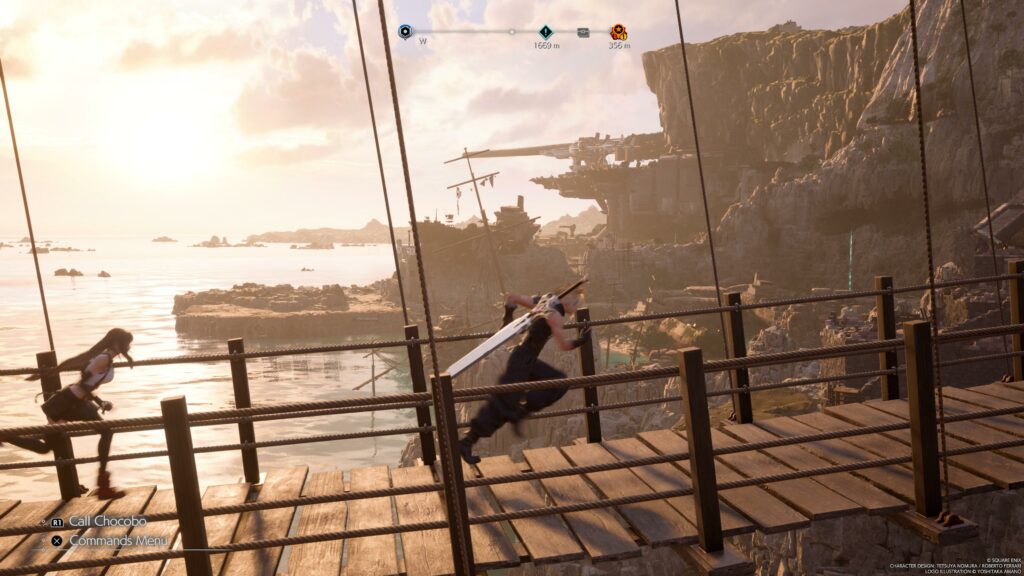
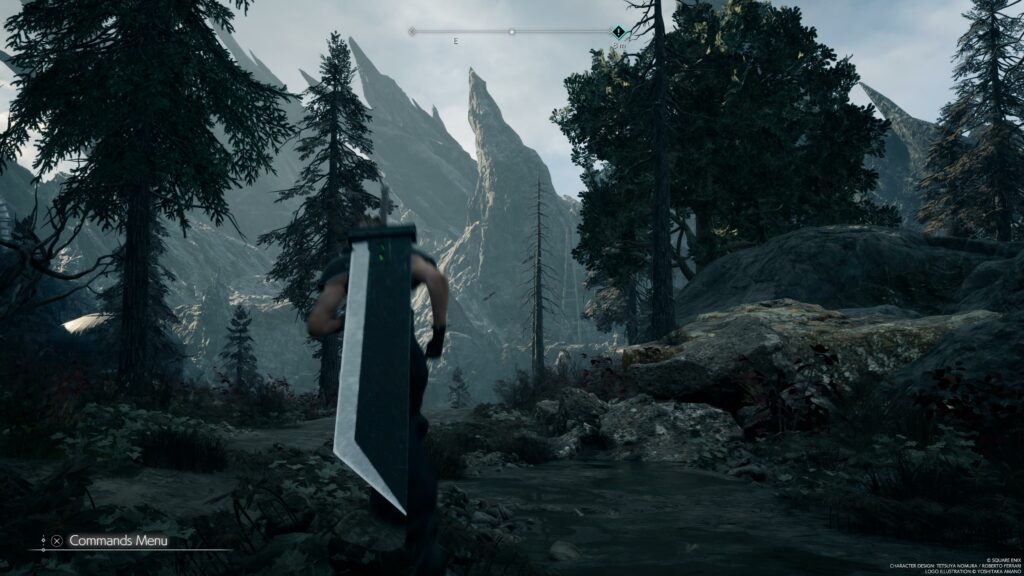
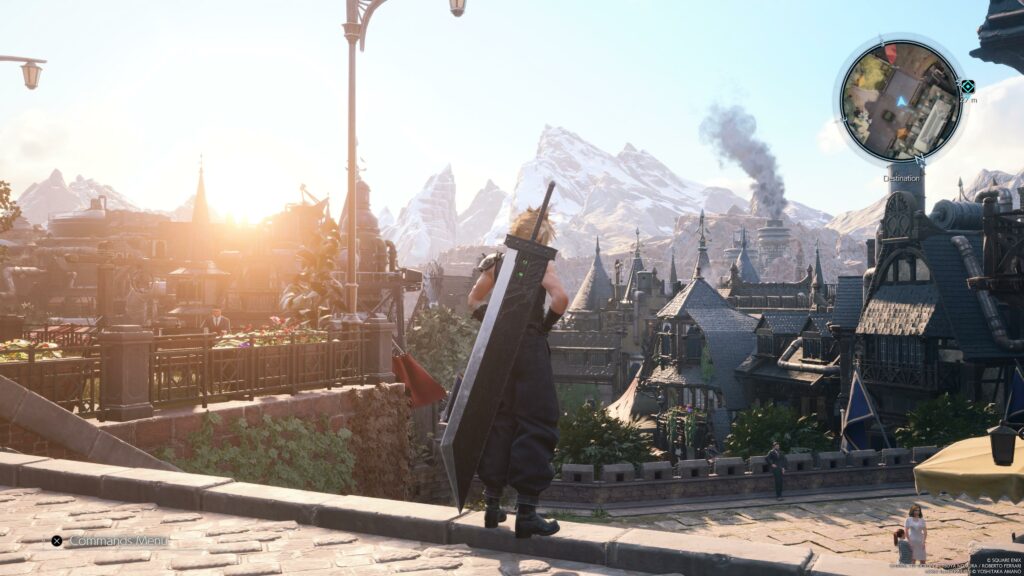
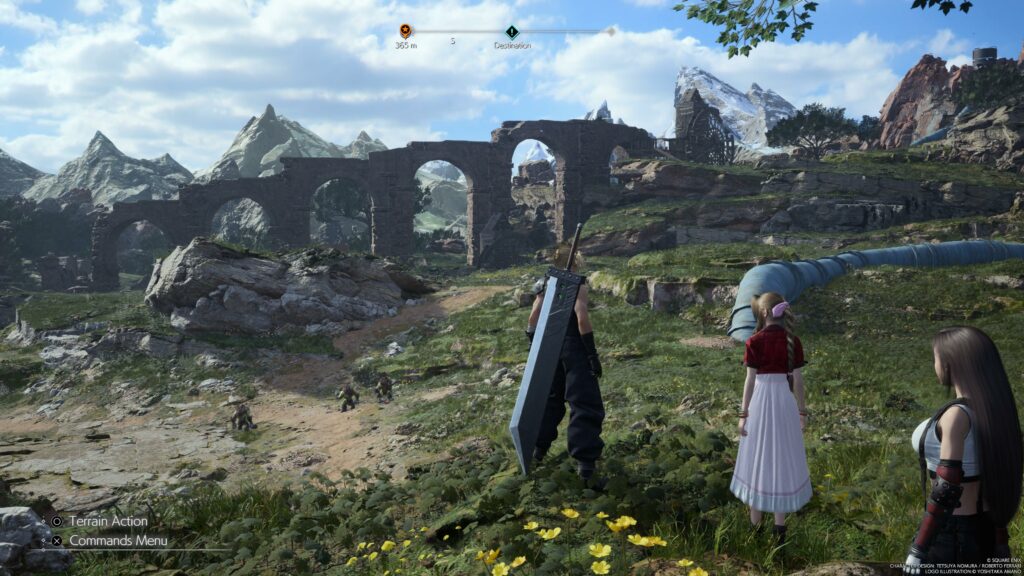
Ubisoft’s Open-World Formula
For better or worse, Square Enix picked up a few things from Ubisoft’s open-world formula, found in games like Assassin’s Creed: Mirage. Final Fantasy VII Rebirth has the infamous towers you’ll have to climb to uncover the map and collectables to find to upgrade your items. However, it’s not as tedious to do as in most Ubisoft games, and Final Fantasy VII Rebirth also lets you control your difficulty settings to make sure you’re enjoying your time with the game.
Again, you don’t have to do anything extra if you don’t want to. But if you do, you’ll find the gameplay loop much more enjoyable here than in most open-world games. For one, your party has Chocobos, giant yellow bird creatures that you’ll ride around Gaia. They can sniff out hidden treasure, help in tracking NPCs, and are super fast and fun to control. Many side quests also focus on catching new Chocobos, racing them, or using them to investigate during your adventure.
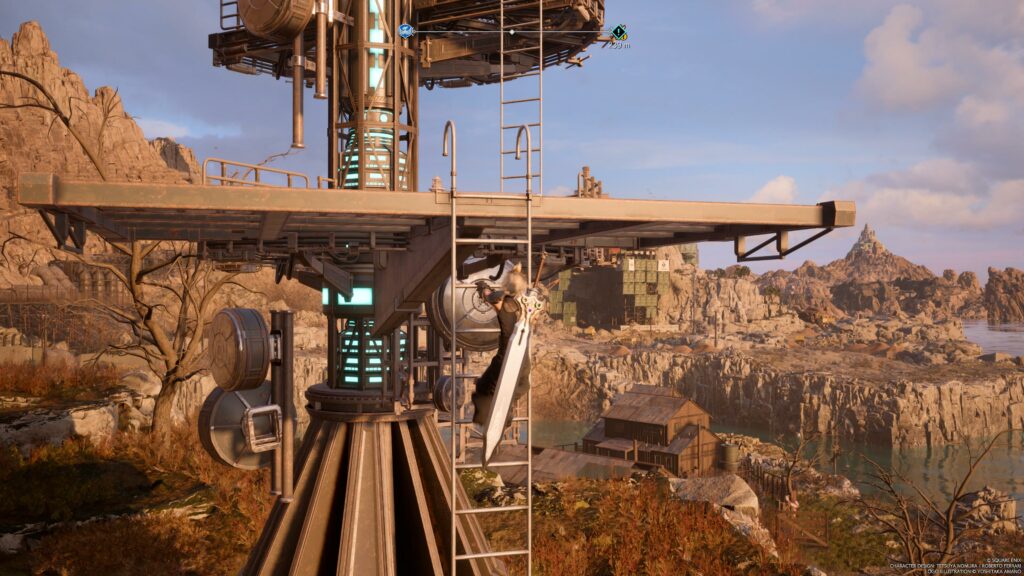
Deep Character Customization
Final Fantasy VII Rebirth gives you a lot of freedom when it comes to developing your characters the way you want to. While certain characters fall into specific roles more easily than others (Aerith is a healer, for example), nothing is stopping you from being creative. The system here isn’t as deep as in Final Fantasy Origin: Stranger of Paradise, it’s very flexible given you’re customizing pre-made characters.
For example, you can set your characters’ Materias (skills), weapons, weapon skills, accessories, summon Materias, etc. Each character also has their own Folio, another layer of skills they unlock as they use different weapons in combat. They can also use Synergies and Limits, skills which grow as you use certain characters in combat together. There are plenty of reasons to replay Final Fantasy VII Rebirth and do it with a completely different set of characters.
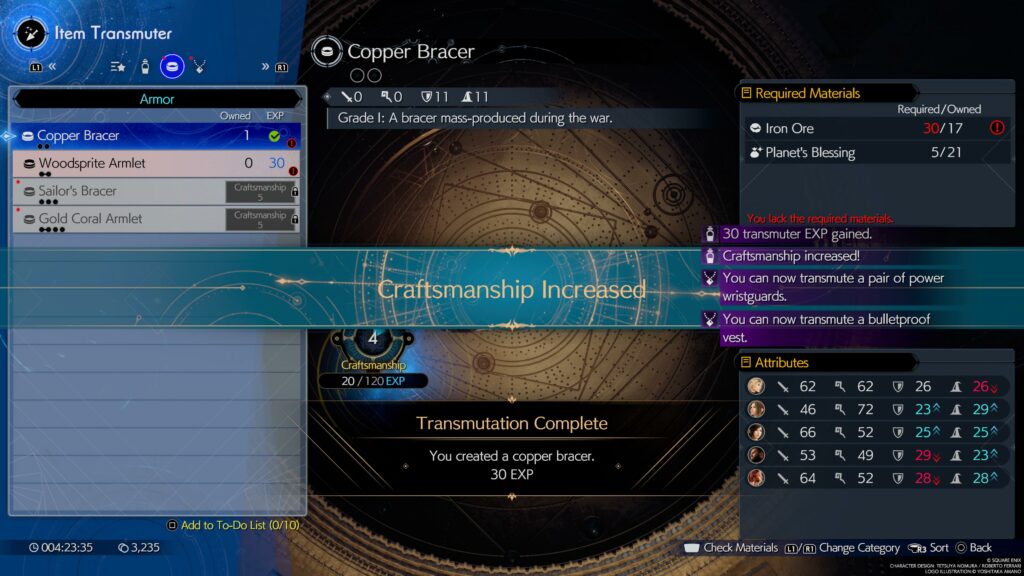

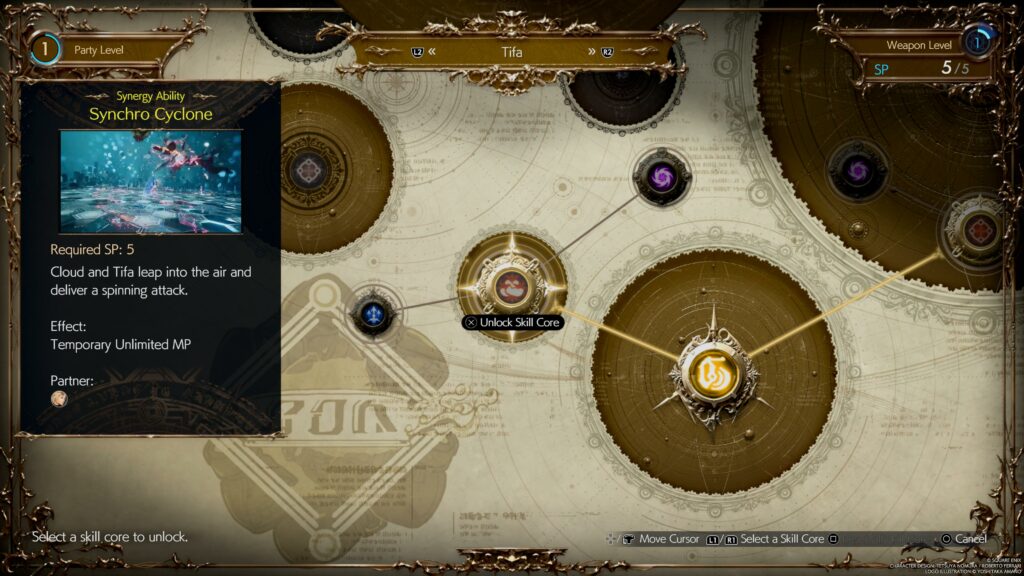
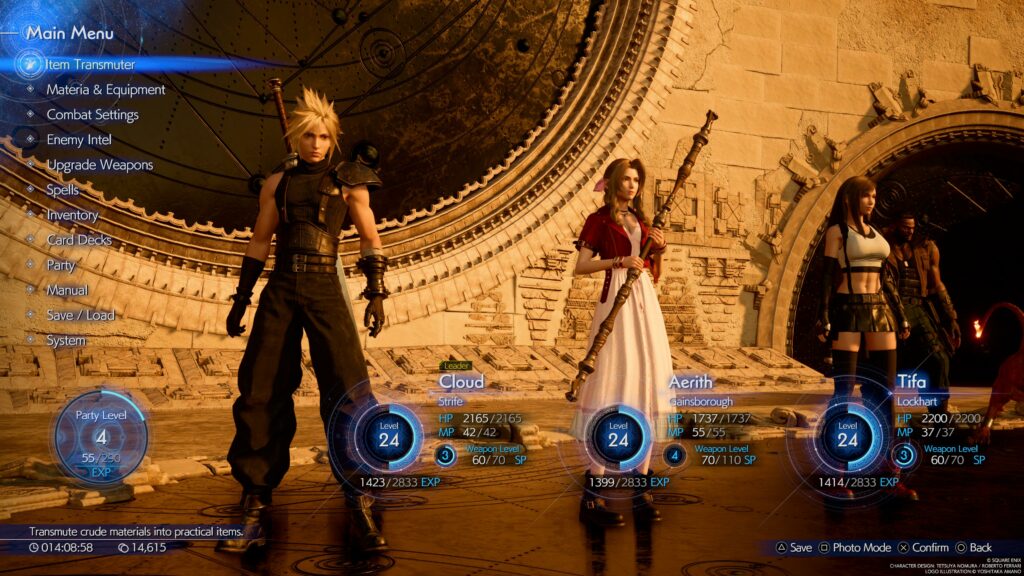
Getting Lost in Minigames
Minigames are another aspect where Final Fantasy VII Rebirth shines. There are dozens of different minigames spread throughout the game, some mandatory, others completely optional. The most notable minigame in Final Fantasy VII Rebirth is Queen’s Blood, this game’s version of Gwent from The Witcher 3. Two players draw cards from their decks and collect points on three different lanes.
It’s deceptively simple and very addicting – and it has its side quests attached to it. Fort Condor also makes a return from Final Fantasy VII Remake Intergrade, and you can also look forward to plenty of minigames which are silly but fun and fit the game’s world very nicely. They’re perfect for the times when you’re tired of Final Fantasy VII Rebirth and its serious story and want to have some fun collecting cards or beating high scores.

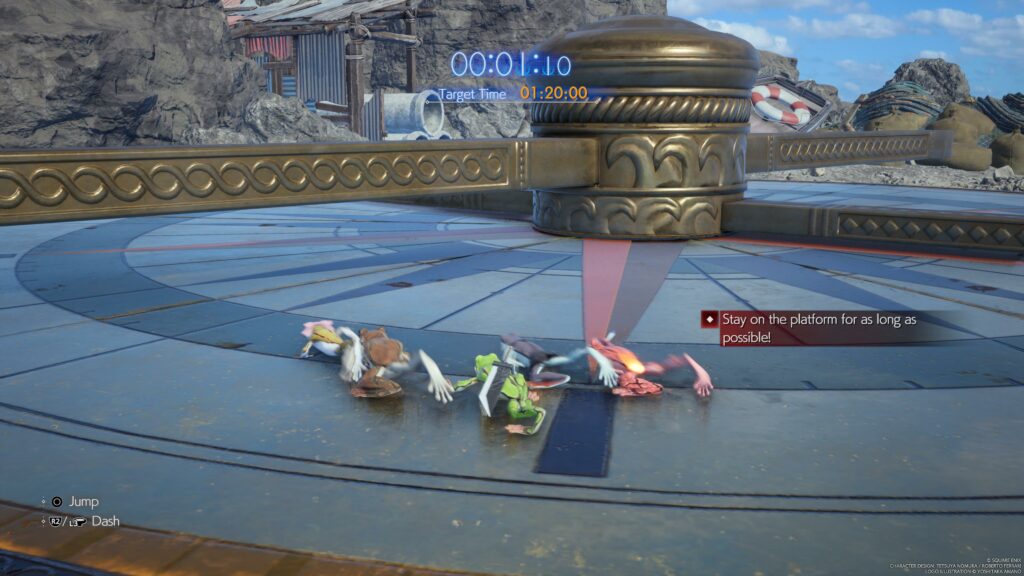
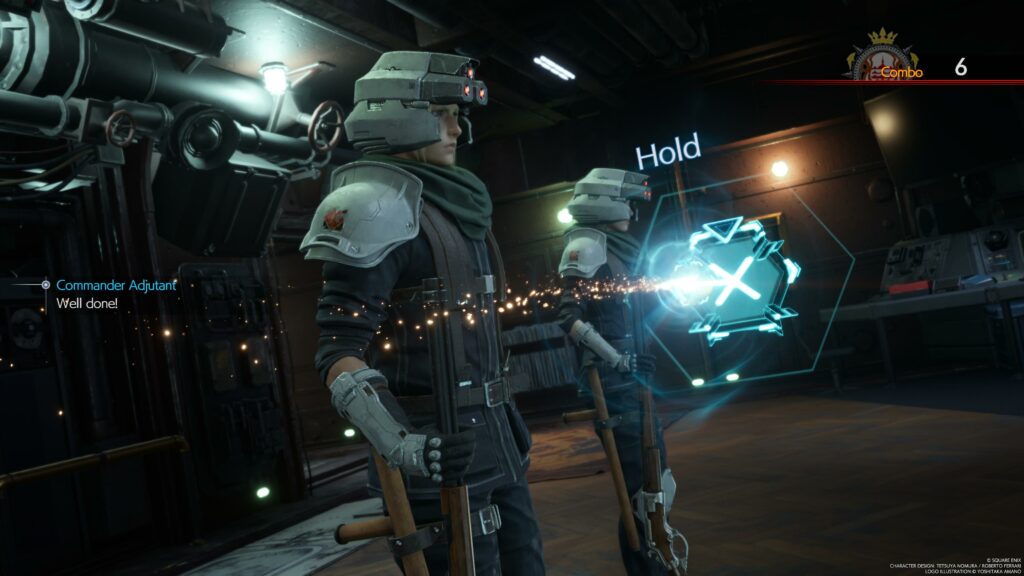

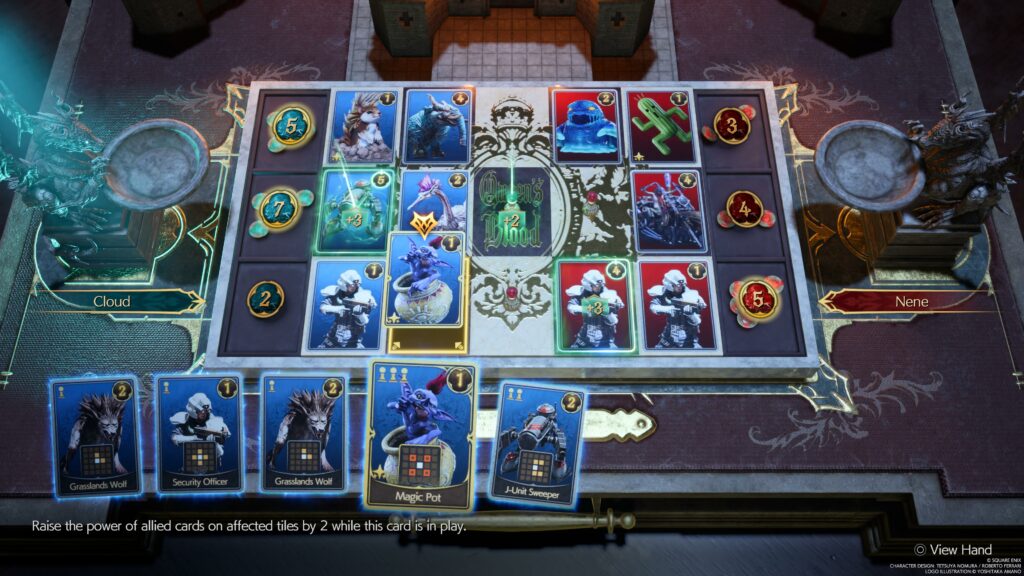
Visuals – Gaia Like Never Before
Contrary to Square Enix’s recent AA games, such as The DioField Chronicle, Final Fantasy VII Rebirth is a high-budget game that was given plenty of attention and resources. The game is built on Unreal Engine 4 and it does a great job at bringing Gaia to life. We are finally at the point where in-game graphics have started to look like CGI movies. Final Fantasy VII Rebirth is a gorgeous game with beautiful biomes, cities, and dungeons. Its character models are of very high quality and each monster design is distinct.
Also, the game’s draw distance is impressive, especially considering how detailed each surface, building, or vista is. The only problem in Final Fantasy VII Rebirth comes in the form of lighting. The game can’t keep up with changes in shadow placement when going in and out of buildings, going under trees, etc.
Objects either look extremely illuminated and lack any shadow or are completely darkened by the shadows. Tinkering with HDR settings didn’t help and we suspect it has to do with the engine itself. The team would have benefited from using the Final Fantasy XVI engine here, although that was an in-house engine built specifically for that game.

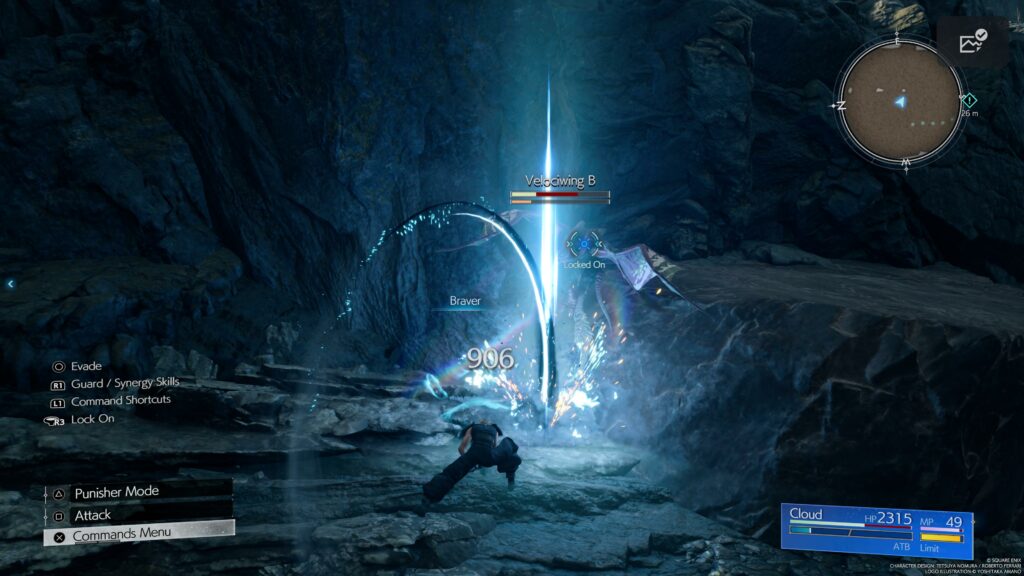

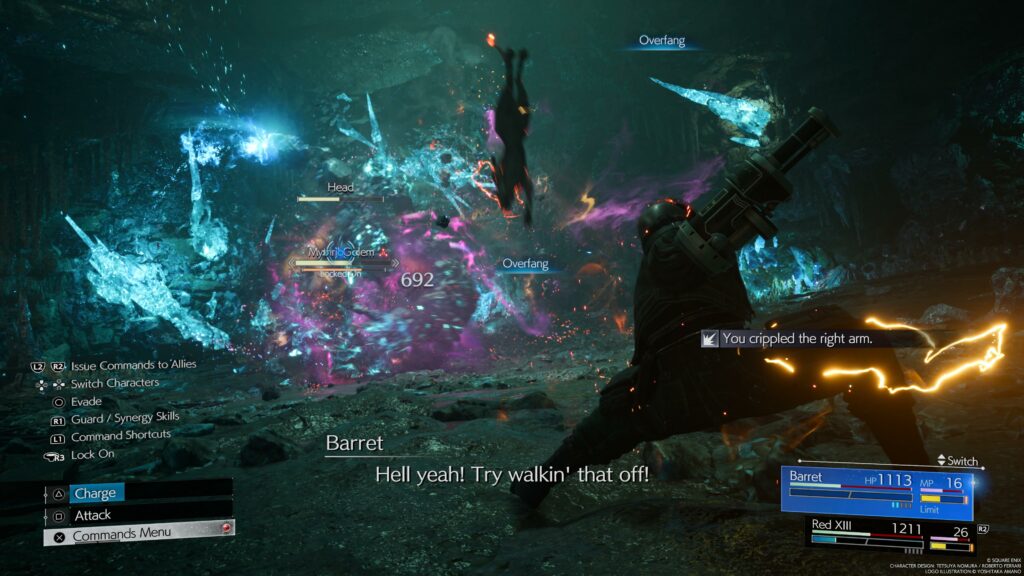
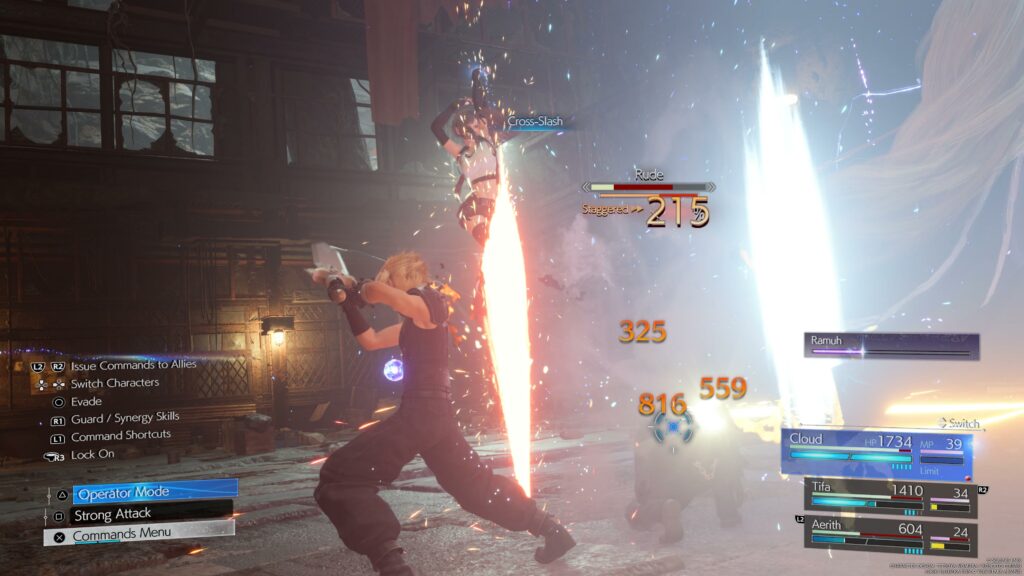
Technically Imperfect
Speaking of engine troubles, Final Fantasy VII Rebirth isn’t perfect when it comes to its performance. The game offers two modes – Performance and Graphics. Graphics runs at 30FPS at a 4K dynamic resolution and with smooth frame-pacing, it’s a completely viable way to play the game. There is no random stuttering present and you’ll quickly get used to its FPS.
On the other hand, the Performance mode runs at 60FPS and just above 1080p. It also features very heavy post-processing and image smoothing which makes the image blurry, especially when playing closer to your screen. It’s not an ideal way to play the game. We recommend sticking to 30FPS for Final Fantasy VII Rebirth, a game which will undoubtedly benefit greatly from customizable settings once it arrives on PC sometime in the future.
Audio – Never Hear the Same Music Twice
The original composer of Final Fantasy VII, Nobuo Uematsu, set high standards for this and many other series within Square Enix. The composers of Final Fantasy VII Rebirth, Mitsuto Suzuki and Masashi Hamauzu, follow in his footsteps in recreating the game’s 1997 soundtrack in a fresh and exciting new way. This game’s soundtrack is rich both in selection and genres, ranging from orchestral music to synthwave.
Final Fantasy VII Rebirth also features plenty of “retro” tracks which emulate the sound effects and music of PlayStation 1-era games, further connecting this game with its roots. Despite the game being a 60-100-hour JRPG, you’ll rarely hear the same tracks twice if you keep moving forward and exploring new areas. It’s one of the rare faults we attributed to Persona 3 Reload in our recent review.

Improved Script and Voice Acting
A different director brings a different type of direction to a project. Picking up from Tetsuya Nomura, Naoki Hamaguchi finds himself in the director’s seat after years of working on the Final Fantasy series in different roles. His influence is immediately felt as Final Fantasy VII Rebirth has a different tone than Final Fantasy VII Remake. This is especially evident in its script, which feels more mature and believable compared to its predecessor.
Apart from characters like Yuffie who are naturally quirky, everyone else is milder, more down to Earth, than ever before. The same applies to voice acting, as both English and Japanese actors had time to adjust to their roles since the first game came out. This adds to their believability and when dramatic events happen, you’ll feel more attached to your favourite characters than you would in Final Fantasy VII Remake.
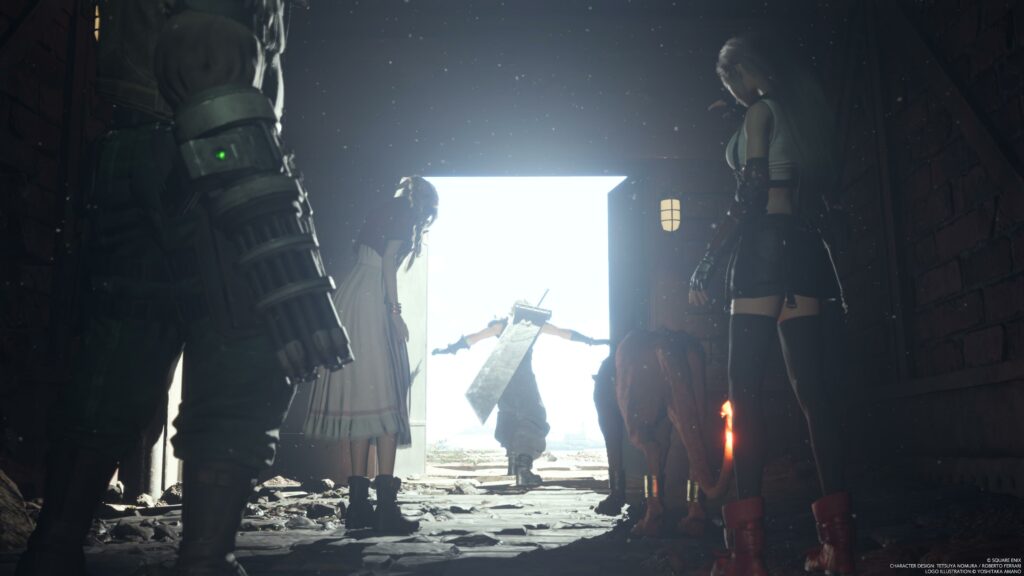
Conclusion – Should You Play Final Fantasy VII Rebirth?
Final Fantasy VII Rebirth is a game made for Final Fantasy fans. But thanks to its open-world nature, more gamers will be inclined to give it a try, as they should. However, to enjoy the story, you should definitely play Final Fantasy VII Remake and Crisis Core: Final Fantasy VII as a bonus.
Telling someone to play one or two large JRPGs before going into an even bigger JRPG is a lot to ask. But without the context of the previous games, you’ll be lost and become disinterested in what’s going on. Aside from that, this is a magnificent, ambitious JRPG that takes a big step into a new direction not only in terms of its storytelling but also from a gameplay standpoint.
Final Fantasy VII Rebirth takes a lot of inspiration from Western RPGs and open-world games – whether that’s good or bad will ultimately be up to the individual. As it stands, it was worth the wait between the Remake and Rebirth. We can only hope that Part 3 of this trilogy won’t take more than a few years to arrive. Final Fantasy VII Rebirth is now available on PlayStation 5, with a PC version coming sometime later.
Big thanks to CD Media for sponsoring our review.
